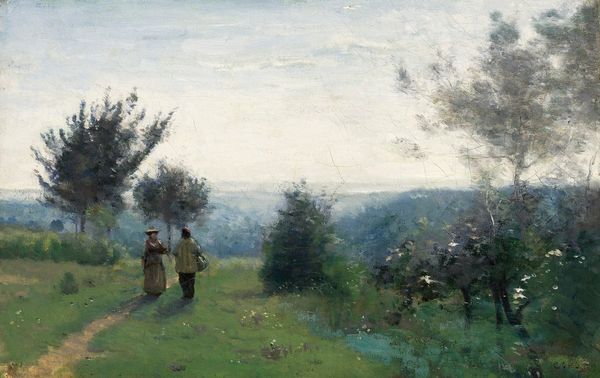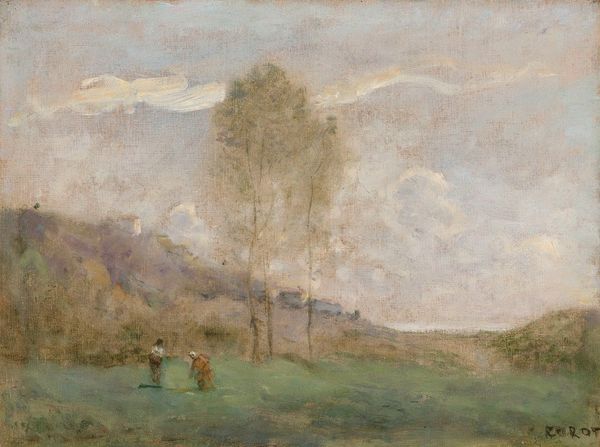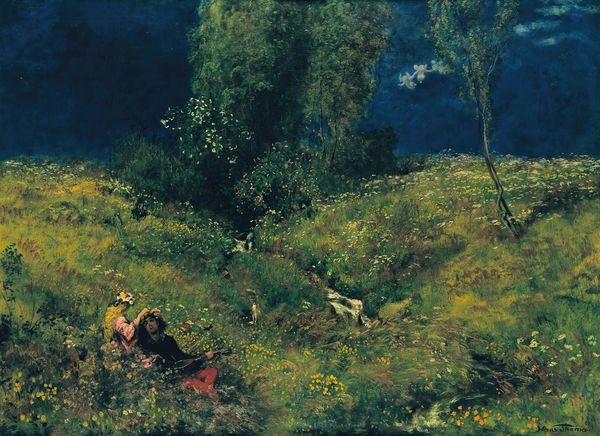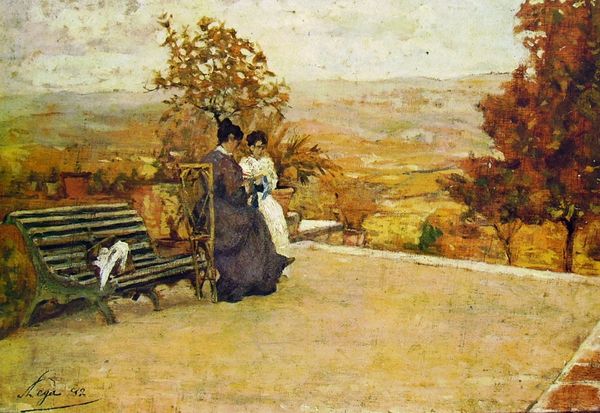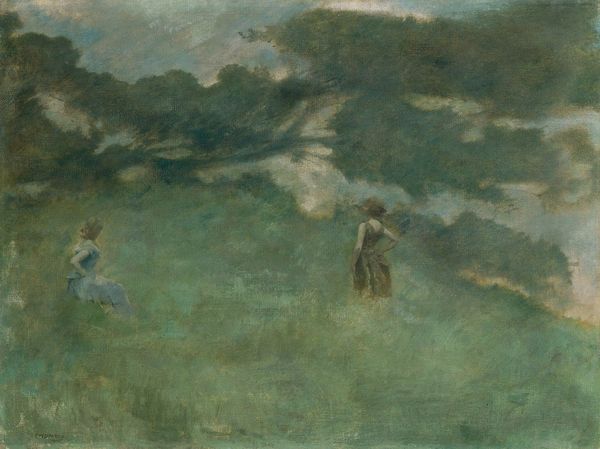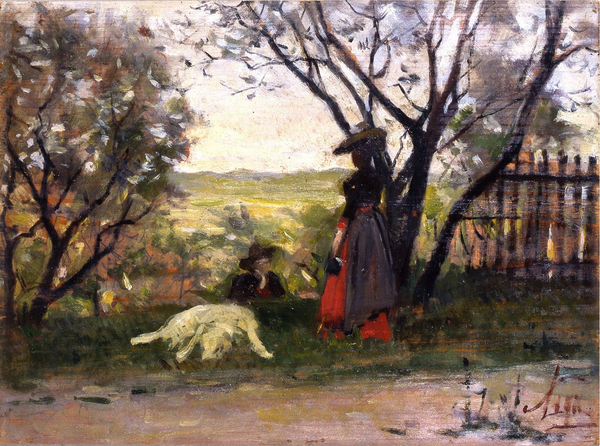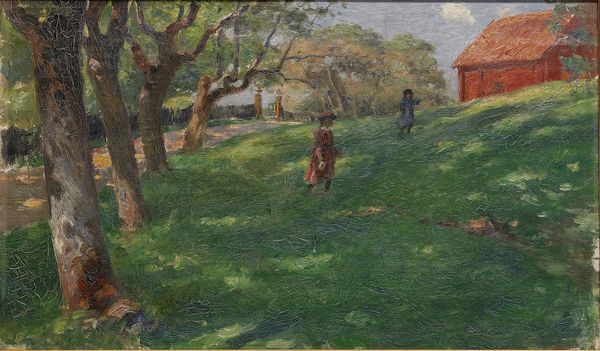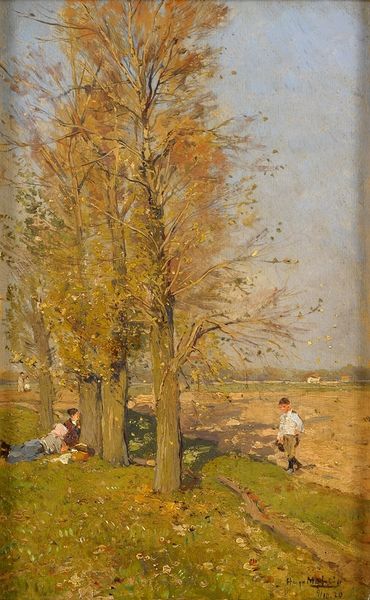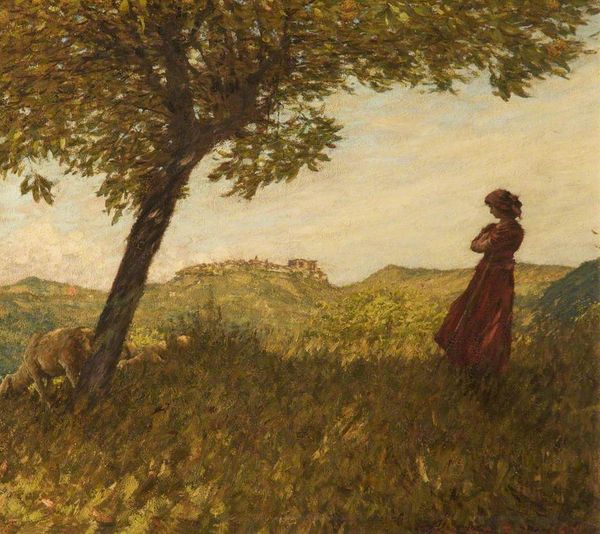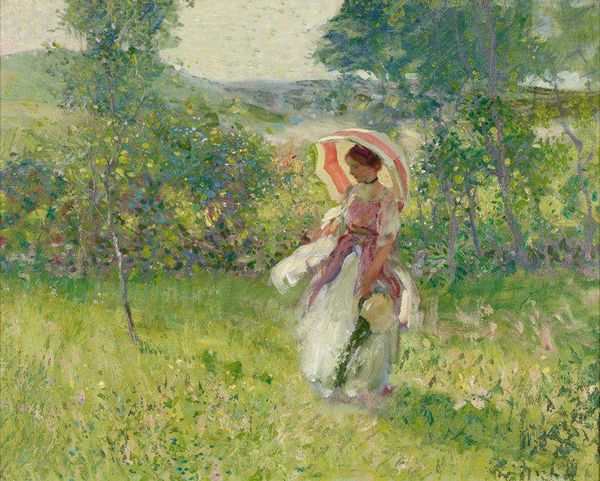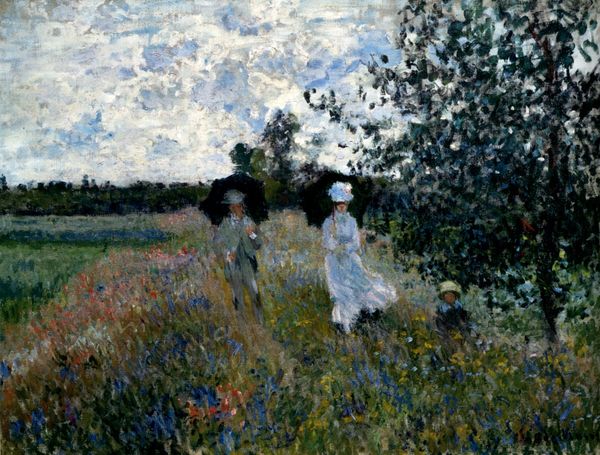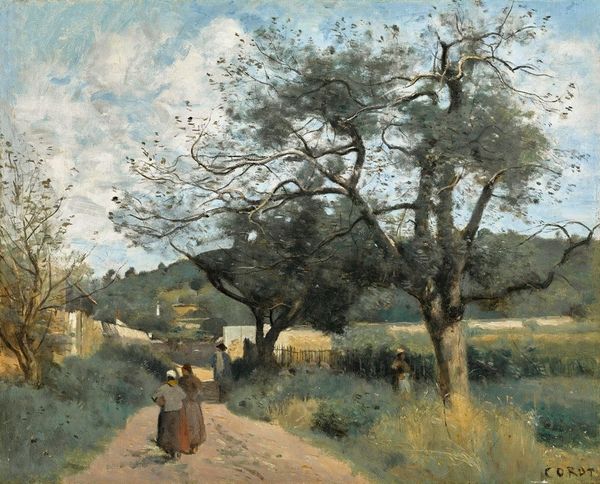
painting, plein-air, oil-paint
#
portrait
#
painting
#
impressionism
#
plein-air
#
oil-paint
#
landscape
#
figuration
Copyright: Public domain
Henri Martin painted "Rest" in France, during a period marked by significant social change. Martin's pointillist technique—small, distinct dots of color—creates a shimmering, almost dreamlike quality, but it also subtly echoes the era's scientific fascination with optics and color theory, mirroring the rise of industrialization and its impact on daily life. The figures take their respite on a hillside, perhaps offering commentary on the relationship between the working class and the land, a theme prevalent in late 19th-century French art and literature. The composition invites us to consider the changing roles of labor, leisure, and the environment in shaping French identity. To fully appreciate Martin's work, one might turn to social histories of the French countryside, studies of agrarian labor movements, and analyses of the art market of the Third Republic. Such research emphasizes how art is not simply a product of individual genius but is deeply embedded in its time.
Comments
No comments
Be the first to comment and join the conversation on the ultimate creative platform.
